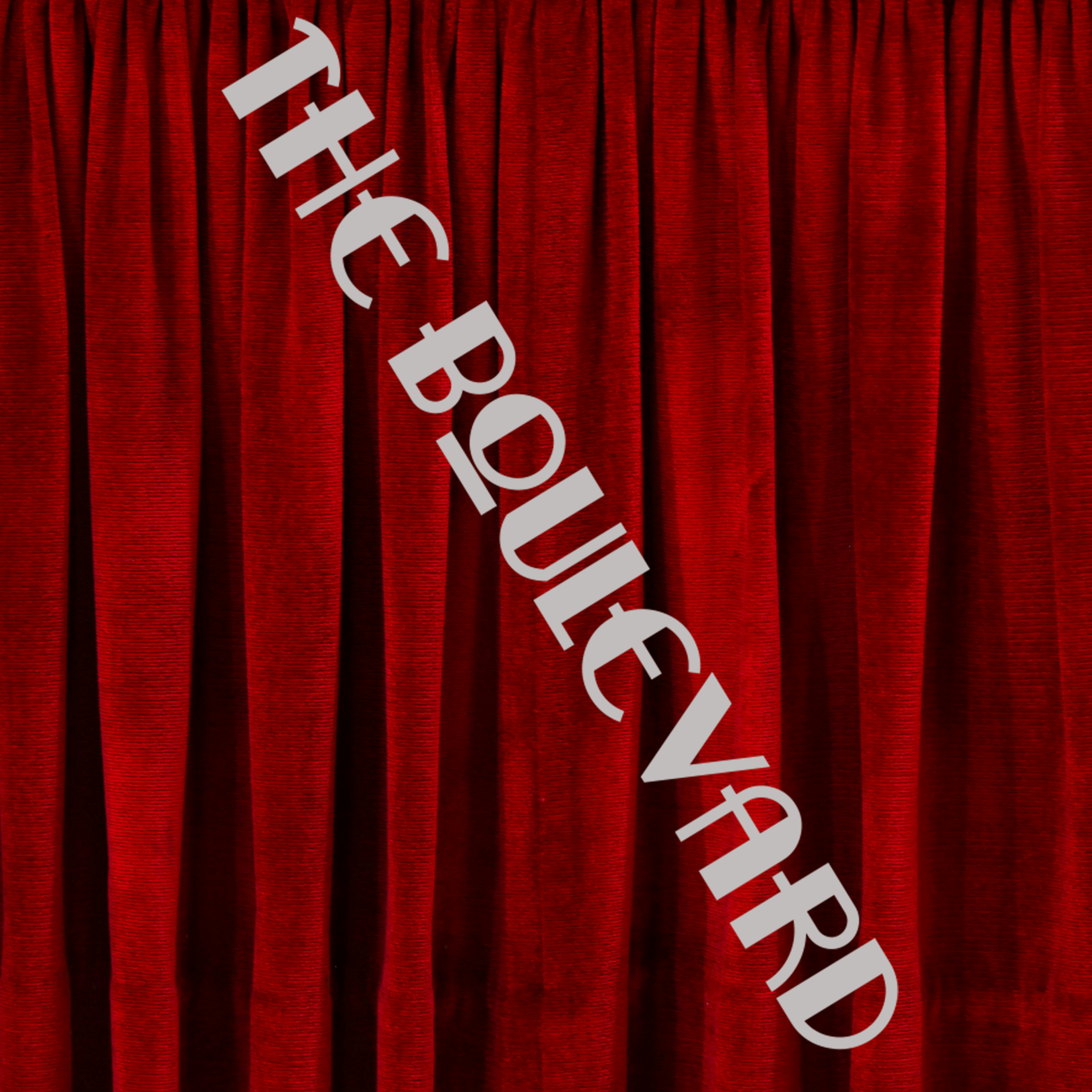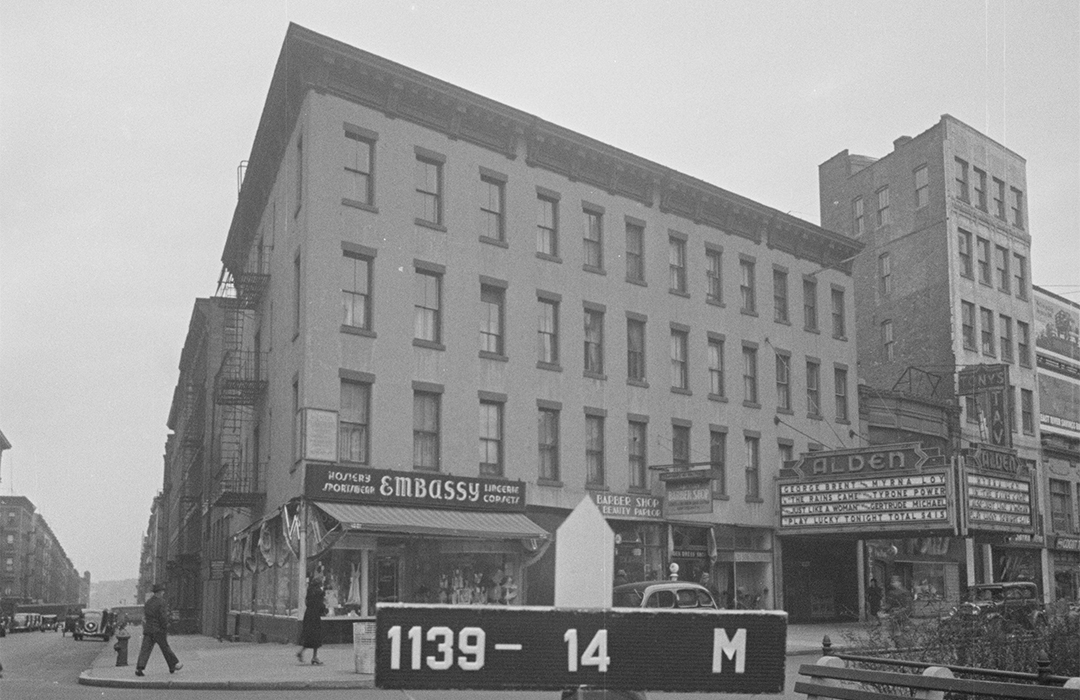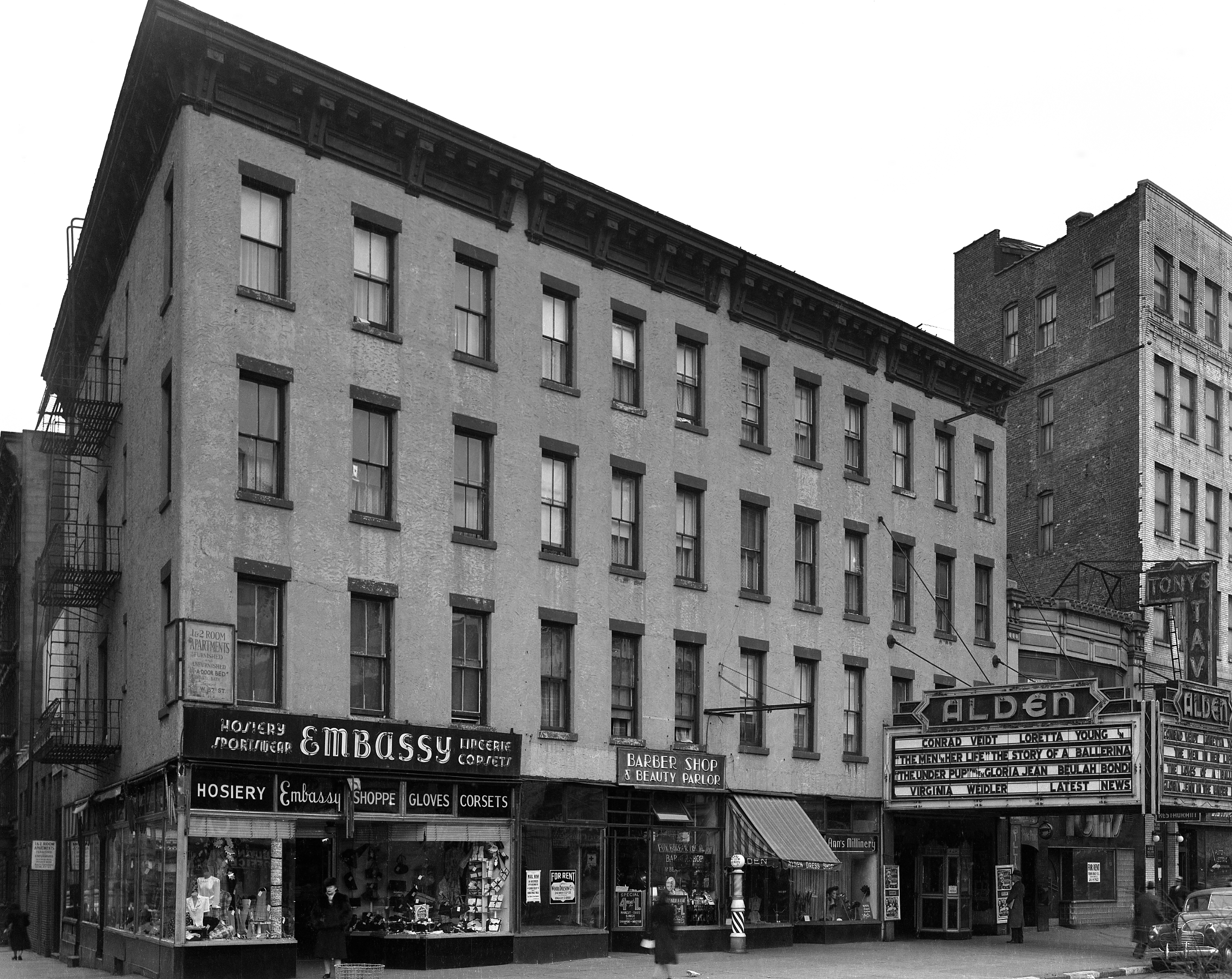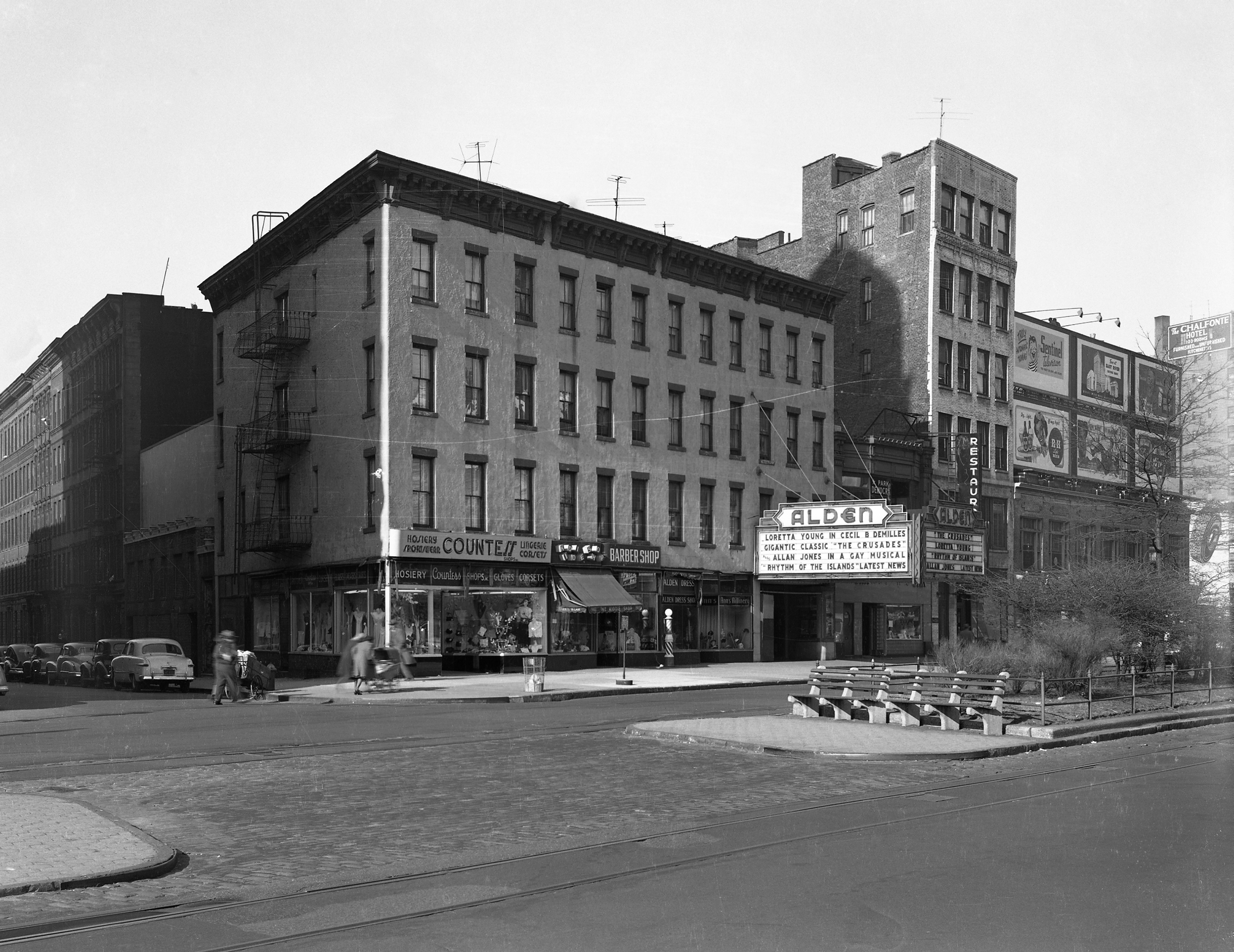
1981-1987 Broadway, The Arkenburgh Buildings
by Tom Miller
Robert H. Arkenburgh was born in Nyack, New York in 1815. He relocated to New York City in 1844 and established a wholesale left tobacco business, R. H. Arkenburgh & Co. America’s Successful Men would comment in 1895, “He added to his fortune by judicious investments in local real estate, especially on the West side.” Among those investments were the four building plots he purchased in 1876 at the northwest corner of The Boulevard and 67th Street.
Arkenburgh hired architect Fr. S. Barus to design four identical flat-and-store buildings at 159 to 165 The Boulevard. (The street was alternately and confusingly called the West Boulevard, Grand Boulevard, and the Western Boulevard). The addresses would become 1981-1987 Broadway around the turn of the century. Each of the brick-faced structures would cost Arkenburgh $8,000 to construct—the equivalent of $235,000 in 2024. Completed in 1877, the vaguely Italianate style structures were stoic in their design. Plain brownstone sills and lintels offered no ornamentation. Only the individual, pressed metal cornices were stylish.
There was one apartment per floor in the buildings. The tenants had barely moved in when they petitioned the Board of Aldermen for running water. The document, dated October 24, 1877, said in part:
We…most humbly pray that your Honorable Board will look upon this our humble petition to be relieved from a most urgent want and necessity, in a kindly spirit, by granting to your humble petitioners the much needed privilege of being allowed to use that Croton water now running through the High Pressure services mains, and now laid along the Grand Boulevard.
We beg to impress upon the consideration of your Honorable Board, the hardships that we now endure, even to the detriment of health itself, from the want of an adequate supply of water, to the upper floors…of the new and substantially built buildings now occupied by your humble petitioners, and known as the “Arkenburgh Buildings,: the same being situated on the west side of the Grand Boulevard, between the Sixty-seventh and Sixty-eighth streets.
Among the tenants in 1885 were August Stanislaus Mikolasch and his wife. The couple was married in 1876 and had two children. Mikolasch ran a drugstore, and when peculiar prescriptions began coming in around November 9, 1885, he at first became suspicious, and then paranoid. According to The Sun, “There were five prescriptions on his book which called for cyanide of potash.” Mikolasch told his wife he “thought there was a conspiracy to compel him to fill a poisonous prescription.” If successful, the scheme by some nefarious perpetrator would have resulted in murder by a third party—in this case by August Mikolasch.
Ruehe slept in the rear, a fact unknown to three young burglars.
Mikolasch anguished over his suspicions. On Monday, November 16, he attempted suicide, but his wife intervened in time to save him. Then, on November 18, The Sun reported he “was found dead early yesterday morning in a closet in his residence at 163 Western Boulevard.” In an ironic twist, the coroner “decided that Mikolasch had committed suicide by taking cyanide of potash.”
Frank Demarest lived in that same building in 1893. He had worked at the Rutland Apartments at 256 West 57th Street until early that summer, when he was let go. He returned on June 6, but his intention was not to get his job back. The following day, The Evening World reported, “Frank Demarest, twenty-three years old, of 163 Boulevard, was held in $1,500 bail in the Yorkville Court this morning on a charge of burglarizing the Rutland apartment-house…He gained entrance to the house yesterday and stole about $100 worth of goods belonging to Mrs. John H. Schofield.
At the time, the ground floor of the corner building was home to Henry Ruehe’s saloon. Ruehe slept in the rear, a fact unknown to three young burglars. He locked up the saloon around 2:00 on the morning of November 3, 1894 and went to bed. The Evening World reported, “Saloon-Keeper Ruehe says he had barely fallen asleep when he was awakened by a crash of breaking glass and found [the men] inside the storm door of the saloon.” Although the oldest, James Conlon, was just 29 years old, all three were known to police. The article said 26-year-old James Connolly, alias Gunther, “has been frequently under arrest as a policy dealer.” (Policy rackets were a version of a numbers game, or illegal lottery, that preyed on the desperate poor.)
The tenants upstairs were working class, as reflected in several position-wanted ads. One appeared in The New York Times on January 14, 1894 that read, “Second Man—By young Englishman, as second man; can furnish good city references from last employers. P. Taylor, 161 West Boulevard.” (A “second man” assisted the butler in a domestic staff.) Another advertised on February 4, 1896, “Waiter and Useful Man—By young man in private family; city or country, attend furnace, windows, clean silver; owns dress suit; wages low. Edward Barry. 161 Boulevard.”
Edward A. Coyne, an undertaker’s assistant, lived at No. 163 in 1896. His brother, James P. Coyne, was engaged to be married to Mary Flynn. In April that year, James transferred the benefits of his $1,000 life insurance policy to Mary and gave her control over his funeral. He almost assuredly made the changes because of his failing health.
James P. Coyne died of consumption (today known as tuberculosis) on October 18, 1896. Mary Flynn had a different undertaker handle the funeral and burial. According to Edward Coyne, “he was not even allowed to look at the body,” said The New York Times. The tensions between Coyne and his brother’s fiancée erupted at the gravesite. The New York Times began an article on October 21 saying, “There was a dramatic scene in Calvary Cemetery, Brooklyn yesterday afternoon.” Coyne skipped the funeral and went ahead to the cemetery where he laid in wait for the cortege. “He denounced his brother, dramatically, as the body was being lowered into the grave, and forbade the burial,” said the article. “He also tore up a wreath of white tea roses placed on the grave by Miss Flynn.” The article ended saying, “Finally he was induced to go away.”
- C. Jandorf & Co.’s bicycle shop occupied 165 Boulevard at the time. Bicycling, or “wheeling,” had taken the country by storm, but the hobby was highly expensive. The store had a sale in May 1896, announcing “We will cut prices this week so that anybody wanting good bicycles at prices impossible to duplicate.” The ad offered sale prices of $39, $49, and $59 for “honest bicycles.” (The least expensive would translate to $1,430 today.)
Like Frank Demarest, Peter Stapleton found himself behind bars in August 1897. The 25-year-old was, according to police, a member of the “Slaughterhouse Gang.” Getting him to jail, however, was a dangerous challenge for Police Officer Harris of the West 68th Street Stationhouse. He arrested Stapleton late at night on August 6 at 68th Street and West End Avenue. Suddenly, “about a dozen of his comrades at once made an attack on the officer,” reported The New York Times. The article said he was “assailed with stones and brickbats,” but he used Stapleton as a shield and, as a result, “the unfortunate prisoner suffered from their marksmanship.” Harris held the gang members at bay with his revolver until help arrived.
The Republican Club occupied the storefront of 163 Boulevard by at least 1897. The meeting place of the 19th Assembly District Republican Organization, it remained here through the turn of the century.
The 25-year-old was, according to police, a member of the “Slaughterhouse Gang.”
Around 1908, the upper floors of 1983 and 1987 Broadway were converted to office and small manufacturing spaces. In 1908, Eliza J. Arkenburgh leased the “upper part” of 1987 to “a Mr. Harrison,” according to the Record & Guide, and in September 1910, she leased the second floor of 1983 Broadway to Thomas Pappas and Peter Vangel for their business.
The Workers News Supply & Publishing Co. occupied the corner store in 1912. The shop sold newspapers, magazines and paperback books. By 1914, Adolph H. Mayer opened his Victrola store in 1983 Broadway. He would remain in the space through 1920, after which he moved to 1989 Broadway.
This stretch of Broadway was known by now as Automobile Row. Two of the floors above Adolph H. Mayer’s Victrola shop were occupied by the Gardner Engine Starter Company, and next door at 1985 Broadway was the King Tire Company. In 1918 that firm expanded, leasing the entire building at 1987 Broadway, as well.
In July 1918, The Coastwise Warehouses, Inc. purchased the group of buildings. The Real Estate Record & Guide said the broker “was unwilling to divulge…whether an improvement of the property is contemplated.” The question seemed to have been answered a year later, when The Coastwise Warehouses, Inc. sold the buildings. On November 8, 1919, the Record & Guide reported, “The purchaser intends to erect on the site a three-story fireproof building, suitable for use as a high-grade restaurant or automobile showroom.”
Instead, the upper floors were renovated as the Alden Apartments, and the ground floor of 1987 Broadway became the lobby to the Alden Theatre (the auditorium ran behind the Broadway buildings). Twenty-five years later, on March 23, 1945, The New York Times reported that The Broadway and Sixty-seventh Street Corporation, “an affiliate of Brandt Theatres,” had purchased the Alden Theatre and Alden Apartments. Little changed for the properties, either in their appearance or function. In the 1970s and 1980s, the Regency Theatre was known for showing vintage films. On April 12, 1981 through April 25, for instance, it screened the 1939 classic Gone with the Wind.
The end of the line for the century-old row was on the near horizon, however. The blockfront was demolished in 1984 to make way for the 27-story residential tower designed by John Harding & Associates.
Tom Miller is a social historian and blogger at daytoninmanhattan.blogspot.com
BUILDING DATABASE
Keep Exploring
Be a part of history!
Think Local First to support the business at 1981 Broadway:
Meet Alberto Alarcón




